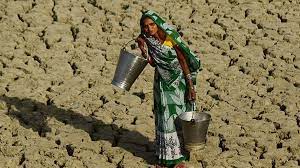CURRENT AFFAIRS
Get the most updated and recent current affair content on Padhaikaro.com
The burden of climate change on New Born children
- IAS NEXT, Lucknow
- 30, Sep 2021

A study was recently published by Researchers on the impact of Climate Change on children born today.
- The study is based on data from the Inter-sectoral Impact Model Intercomparison Project (ISIMIP).
How was the study carried out?
The ISIMIP data were used alongside country-scale, life-expectancy data, population data and temperature trajectories from the Intergovernmental Panel on Climate Change (IPCC).
Next Analysis-
- Children born today will be hit much harder by extreme climate events than today’s adults.
- During his or her lifetime, a child born in 2021 is likely to experience on average twice as many wildfires, two to three times more droughts, almost three times more river floods and crop failures and about seven times more heat waves compared to a person who is, say, 60 years old today.
What needs to be done?
Under a scenario of current “insufficient” climate policies, dangerous extreme heatwave events, which affect about 15% of the global land area today, could treble to 46% by the end of this century.
However, if:
- Countries are able to follow through with their climate policies as decided under the Paris Climate Agreement, this effect could be limited to 22%, which is just seven percentage points more than the global land area that is affected today.
- Weincrease climate protection from current emission reduction pledges and get in line with a 1.5-degree target, we will reduce young people’s potential exposure to extreme events on average by 24% globally.
What is the Inter-sectoral Impact Model Intercomparison Project (ISIMIP)?
This is a community-driven climate-impacts modelling initiative that assesses the differential impacts of climate change.
- Initiated by the Potsdam Institute for Climate Impact Research (PIK) and the International Institute for Applied Systems Analysis (IIASA) and has since grown to involve over 100 modelling groups from around the world.
Who is involved?
NGO’s, Private sector, Policy-/decision -makers.
How is it carried out?
ISIMIP is organised into simulation rounds, which are guided by a focus topic. For each round, a simulation protocol defines a set of common simulation scenarios based on the focus topic. Participating modelling groups are provided with a common set of climate input data, and other data (in some cases unique to one sector) necessary to ensure cross-sectorally consistent impacts simulations.